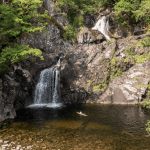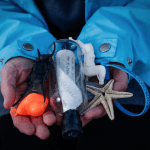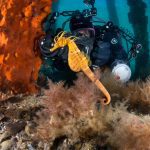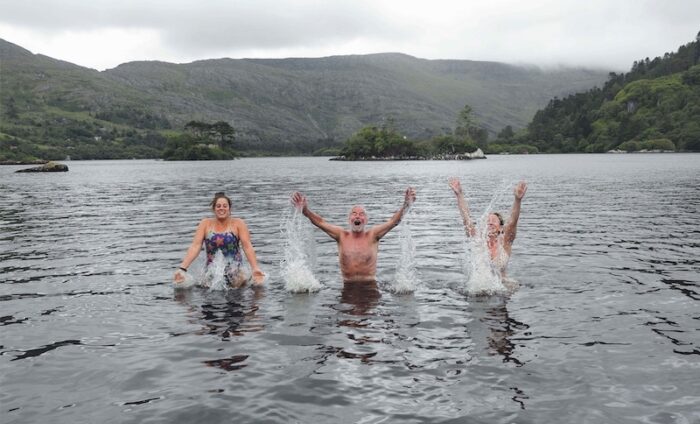
Exploring Ireland’s wild swimming spots
Five swimmers with an inflatable tent, an estate car and a plan to try out as many different Irish swims as possible in three nights. Susanne Masters explores the wild swimming spots of Ireland
Of all the forms that outdoor swimming can take, from open water races to soothing balm for troubled thoughts, my favourite is swimming infused with joie de vivre. In this my most committed companions are Alice, Lucy, Keith and Amanda. By planning six months in advance we found three consecutive nights in July when we were all available for a microadventure to be filled with as much wilderness, giggles and sense of wonder as possible. I’ve had a hankering for swimming in Irish waters for years. My fellow adventurers, or – as Lucy’s mum calls us – “micropeople”, were up for a whistle-stop swimmers’ tour meandering 500 miles in a loop from Dublin to the south and west coasts, before heading inland to return to Dublin. We just managed to squeeze five swimmers with dryrobes and a tent in one car.
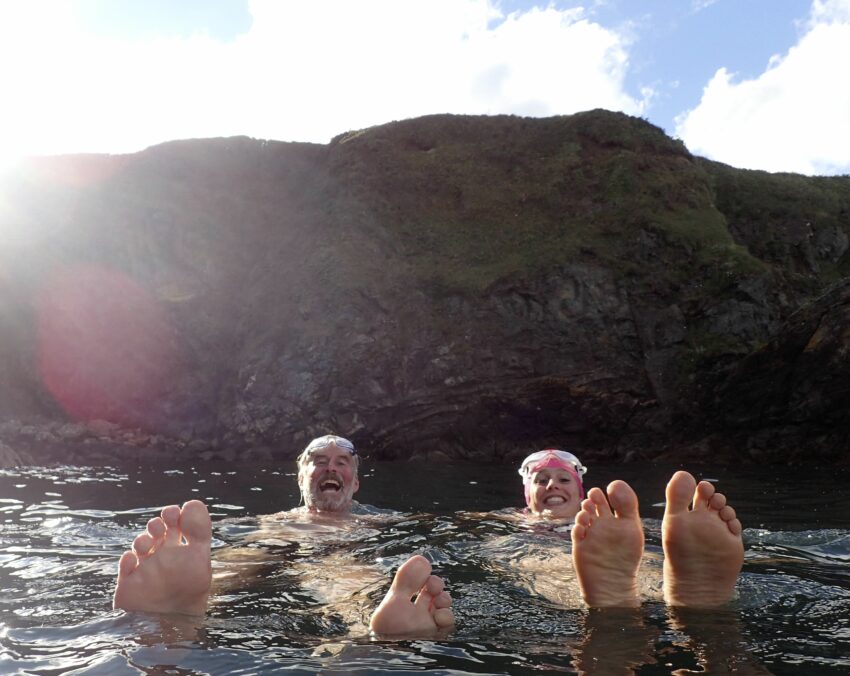
“Occasional blue-white flickers sparked as the water lapped the edges”
Trout and ice cream
Just south of Dublin the Wicklow Mountains are an instant hit of lush, majestic Irish countryside. We had our first swim in Glendalough Upper Lake, which is cupped between two steep slopes rising up from the lough’s shore. Baby trout jostled in the crystal clear water of a stream running into the lough, a contrast to the dark tinted water of the lough itself. Glendalough is a popular site for visitors, though few of them swim. So we had the lough to ourselves, and took advantage of the amenities there, including freshly dispensed ice cream cones dipped in chocolate.
Wanting a salty swim next we headed south to the popular swimming haven of Guillamene and Newton coves. A diving board was in constant use as teenagers launched themselves into deep water. Fishermen cheerfully ignored the no fishing signs, small kids came down with their parents for a swim. Amidst the constant bustle of this family friendly swimming spot it was peaceful catching rays of the setting sun in the still waters of the nooks and crannies of the cove.
Accidental doggers
Fierce wind coming down the Comeragh Mountains stopped us putting our tent up at Mahon Falls. So we pitched our tent in a flowery layby sheltered by trees further down the mountain. After being perused by a slowly cruising car we realised it might be a dogging spot. Nonetheless we had a peaceful night and set off early in the morning to breakfast at Mahon Falls. No one remembered to bring the food and the coffee drinker brought coffee but not tea up the track to the foot of the falls. We laughed, enjoyed the view, ate a handful of peanuts and went for breakfast in Dungarvan.
Heading west along the coast road we had our second swim in the Celtic Sea at Ardmore in a sheltered bay. With white sand and Caribbean blue water the sea felt about 15 degrees Celsius colder than its appearance. A seaweedy bottom in the middle of the bay was a pretty backdrop for splashing around in sunshine.
“Jumping into the stars”
We then headed for Lough Hyne, the motivation for the whole trip. Many swimmers will tell you about the rapids where as the tide changes you can pop through the narrow link between lough and sea at high speed. That was not what we had come for. After a little daytime swim to check how easy it was to get in and out we had a leisurely dinner at the loughside picnic tables, put our tent up in the woods and waited for it to get dark. We came back to the water at about 11pm. Shrieks and splashes could be heard from the patch of land opposite Lough Hyne car park. Teenagers were jumping in and emerging from luminous clouds in the water. “It’s like jumping into the stars,” one said. Occasional blue-white flickers sparked as the water lapped the edges. We didn’t bother with clothes and were entertained by finding different ways to send sparkles flying off our bodies. Glowing embers slid off our arms when we lifted them out of the water. It seemed a bit shallow to jump off the edge so instead we duck-dived down to be enveloped by an aquatic milky way. We got out of the water just before some kayakers returned from a glowing paddle around the lough. So they were greeted at the boat ramp by an array of naked swimmers.
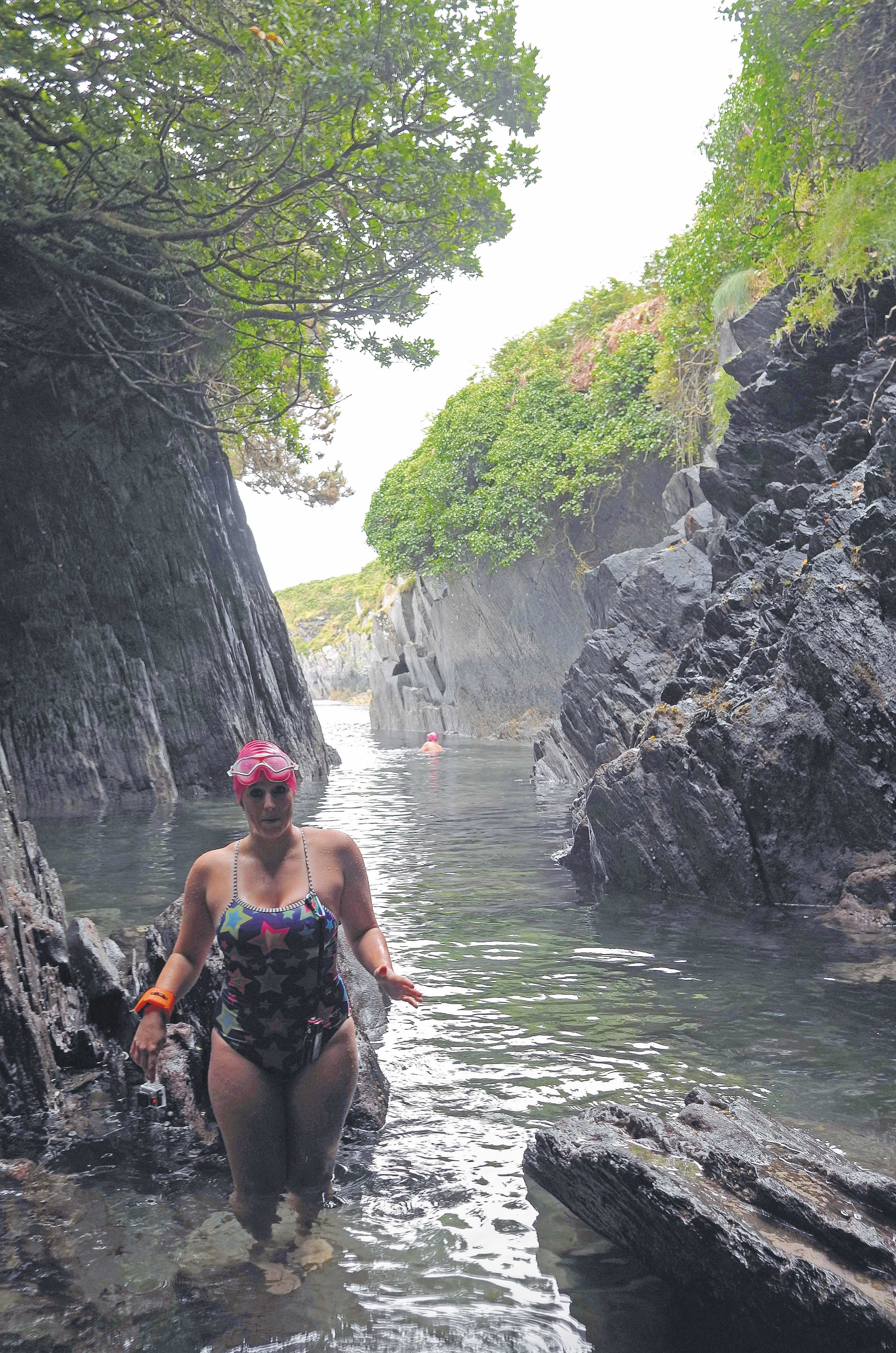
“A high walled tunnel led us back into this cove in the Atlantic Ocean”
A luminous swim is a tough act to follow but the next morning Canty’s Cove was superb. It is reached by a rough track that turns into a footpath and also by a road. I recommend taking the road. Canty’s Cove is narrow and sheltered. There are sets of steps and a ramp down into the water. A handrail by the steps made it easy to get in without slipping on the abundant seaweed. I’d told Alice, Lucy, Keith and Amanda that there was a surprise they might find in the cove that could only be reached by swimming. As Keith, Lucy, Alice and I lingered in a narrow gorge off the side of the cove Amanda said she could hear a waterfall but not see it. We swam up the second gorge and at the back water cascaded off the rocks above. There was no need to head out the way we came, a high walled tunnel led us back into this cove in the Atlantic Ocean.
“Blessed among women”
Glenmore Lake in Beara Peninsula was our next stop. On the way there as we went over Healy pass and its magnificent views a man flagged down our car with an excited wave. He said to Keith, “You are blessed among women. You’ve got four fine women.” By way of explanation Keith replied: “I’m from Cape Town.” We had a less obscure conversation with fishermen we met at Glenmore Lake about fish. They had been out in a boat. We had swam out to one of the little islands in the lake. Not much more than a large rock with a sprinkling of stonecrop growing on it, a scramble up its sides gave a good viewpoint of the still dark water and far above us Healy pass.
On our last day in Lough Gur we had our warmest swim. With remnants of Neolithic living around the lake it is renowned as being a place of continuous human habitation for 6000 years. We walked through the grounds of the heritage centre and out into a field where we used a convenient wall as our towel holder. Neoprene socks or shoes were handy to walk over the sharp rocks where the water was shallow. Launching into the water we bobbed and enjoyed its warmth.
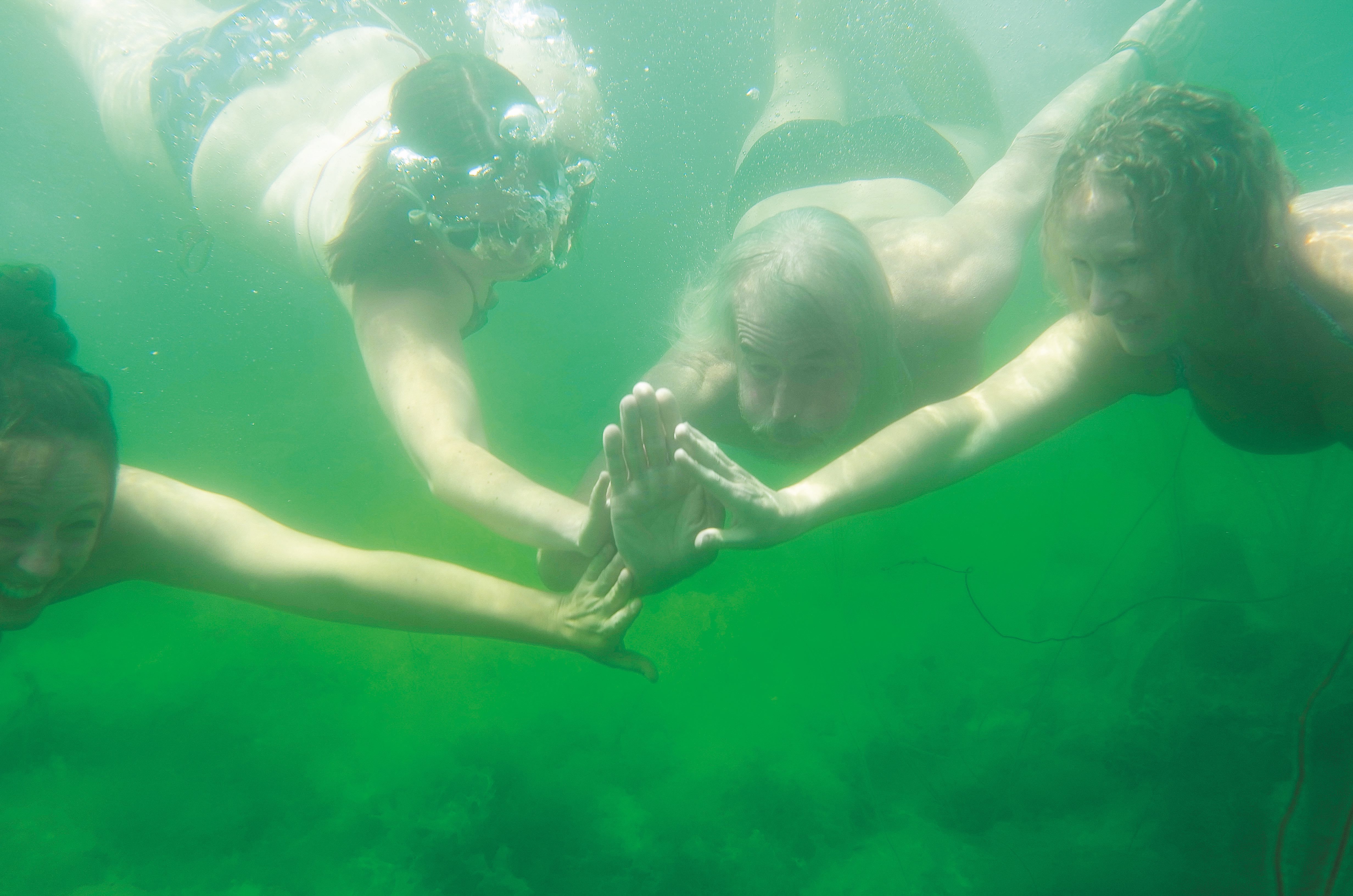
“Micropeople” Alice, Lucy, Keith and Amanda
Bravado and immortality
On the way back to Dublin airport we stopped for a swim at Howth. Keith pointed out that the soggy teenage boys coming down the path back from the swim had cuts on their torsos. Neoprene swim socks for clambering out over barnacles seemed like a necessity. We were prevented from swimming at Howth by the absence of a chunk of staircase. Boys full of bravado and immortality dropped their possessions down onto the rocks and joined them by clinging onto a vertical slab of mud and rock to get down. I felt nauseous. Anyone who has written about swimming at Howth must have been there before erosion and weather removed a section of stairs. A sane person can only access this swimming spot by boat.
Instead we fitted in our swim in the Irish Sea at Portmarnock. We didn’t see lion’s mane jellyfish although they had been reported on the local radio station. A few compass jellyfish washed up on shore and floated in the water. 15 minutes from the airport we were still a world away with clear water and a long sandy beach.
There were so many swims marked on our Irish road map that we didn’t have time to reach, and some of the swims were so stellar that they must be repeated. I am sure to go back for more Irish waters.






